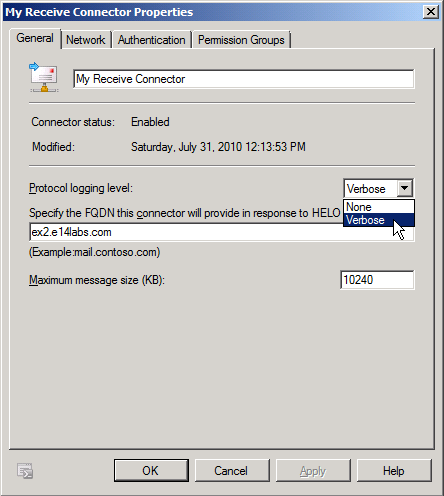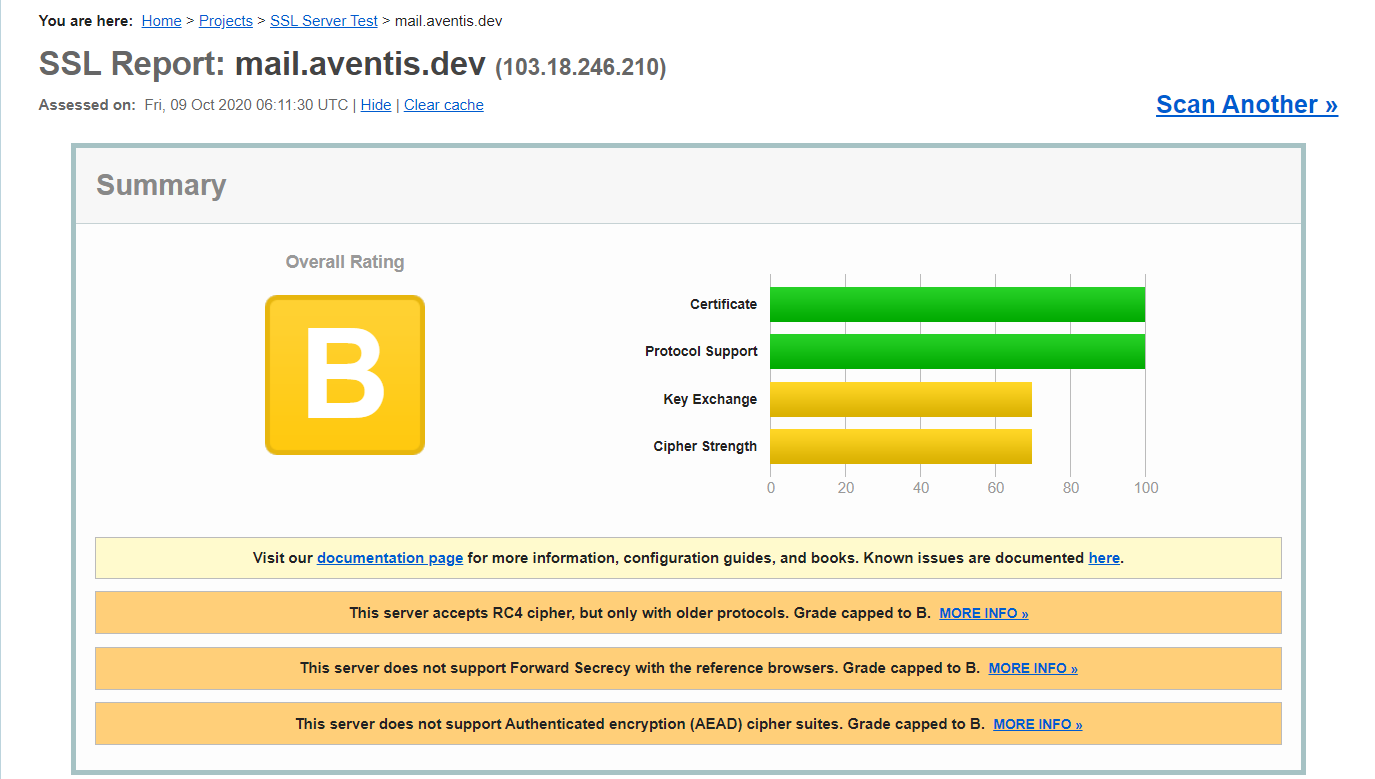

More Informationįor more information about TLS and SSL protocols, see What is TLS/SSL.įor more information about how to enable TLS 1.2 protocol in registry key, see TLS/SSL Settings. Microsoft has confirmed that this is a problem in the Microsoft products that are listed in the "Applies to" section.
#Exchange 2010 tls update
Note This update removes the hard-coded restriction so that SMTP sessions can negotiate with any SSL or TLS protocols that are enabled in the host operating system.

It just says TLS next to it: .com (104.47.19. I see my on-premise Exchange server sends out email to Office 365 using TLS 1.2 but does not receive email via TLS 1.2 from Exchange Online. I have an Exchange 2010 hybrid organization. Update Rollup 9 for Exchange Server 2010 Service Pack 3 Had a question about the whole deprecation of TLS 1.0 and 1.1.
#Exchange 2010 tls install
To resolve this issue, install the following update: This issue occurs because of a hard-coded restriction that limits SMTP to use secure sockets layer (SSL) 3.0 and TLS 1.0 for transport. If you enable transport layer security (TLS) 1.1 or TLS 1.2 in a Microsoft Exchange Server 2010 environment, simple mail transfer protocol (SMTP) uses TLS 1.0 unexpectedly. When looking at the certificates it’s easier to maintain only one SSL certificate with an additional SAN entry then an additional SSL certificate with just one domain name.Exchange Server 2010 Service Pack 3 Exchange Server 2010 Enterprise Exchange Server 2010 Standard More. When using one or two Exchange 2010 servers it doesn’t make sense, but I also have a customer that has 28 Exchange 2010 servers running with 40,000 mailboxes, and here we want to separate Office 365 SMTP traffic from regular SMTP traffic.

Why do you want to use this in the first place? More information regarding certificate requirements for hybrid deployments can be found here: (v=exchg.141) So, in contrast to my previous belief you don’t need a separate SSL certificate for an additional FQDN but you can also use an additional SAN entry on your existing SSL certificate. The validation process again succeeds successfully, but now uses the FQDN (and SAN entry on the SSL certificate) for mail flow from Office 365 to Exchange 2010: I would expect the new FQDN here, but apparently the HCW does not reconfigure the Office 365 Receive Connector on my Exchange 2010. When validating the connector it succeeds successfully, but when you look closely it still uses the old FQDN. When running the Hybrid Configuration Wizard again on my Exchange 2010 server I select the proper SSL Certificate:Īnd entered the additional FQDN : It was time to renew my SSL certificate, so I added an additional SAN entry. During the HCW I entered and selected the proper certificate.

Originally I had a Digicert SSL certificate with Common Name CN=, and a Subject Alternative Name entry. After a previous blogpost there was an interesting discussion (see the comments of this particular blogpost) about this, so now it’s time to do some testing. I was always under the impression that mutual TLS can only use the Common Name of the certificate, which in my scenario is CN=. A proper 3 rd party SSL certificate is needed on your Exchange server. SMTP communication between Office 365 and Exchange in a hybrid scenario is an example of mutual TLS or domain security. If you need to configure domain security (mutual TLS) on Exchange, you need a proper 3 rd party SSL certificate for this. Exchange 2010 uses opportunistic TLS, so the self-signed certificate will do in this scenario. For SMTP you can use the self-signed certificate. On every Exchange server you need SSL certificates for authentication, validation and encryption purposes.


 0 kommentar(er)
0 kommentar(er)
